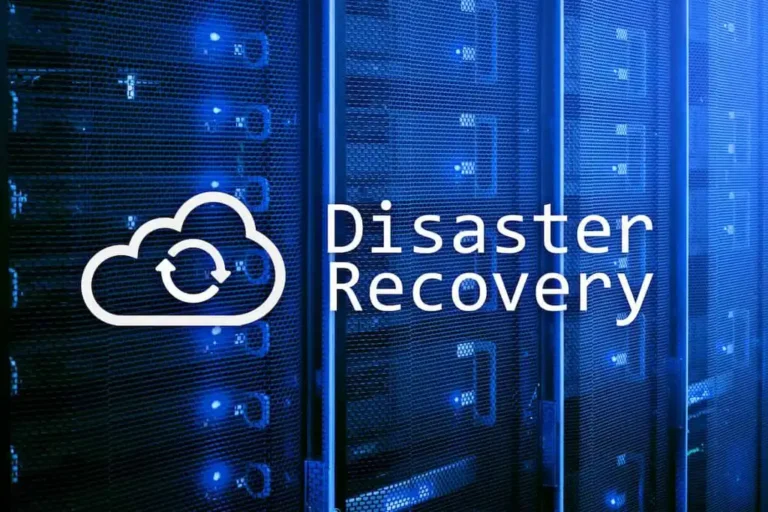The Importance of Disaster Recovery (DR) for Business

Human error, technical failures, or natural disasters can trigger information crises and prolonged downtime, potentially catastrophic for your business. Without disaster recovery (DR) in place, such situations can lead to a complete cessation of the firm’s activities.
A US Small Business Administration study demonstrates that over 50% of firms are forced to stop their activity after a catastrophe. Unfortunately, force majeure events often occur without notice. Therefore, preparation is critical in an instant recovery from any unpleasant situation resulting in database loss or firm interruption. Below, we will discuss what is disaster recovery and the primary types of such an activity in more detail.
The Definition of DR
Disaster recovery is the procedure of restoring a company’s IT infrastructure and operations after a significant failure or catastrophe. The primary objective of DR is to cut the scope of the incident and restore standard business activity to reduce the impact on the company’s profit and reputation.
Natural hazards, cyber attacks, power outages, and other force majeure trigger a disaster recovery plan (DRP). When an adverse event occurs, DRP includes the stages a business may take to restore the functionality of its critical elements, including databases, services, and IT applications.
DRP as a rule includes recommendations for backing up and restoring information, systems, and the network. The document should be continually examined and improved to ensure it is executed efficiently and instantly.

We are confident that we have what it takes to help you get your platform from the idea throughout design and development phases, all the way to successful deployment in a production environment!
Main Profits of Disaster Recovery
Today, more firms are considering preparing for DR. Why is this aspect so vital for business?
- Minimal downtime. DRP helps to decrease the downtime interval by instant restoring and decreasing disruptions.
- Information security. Backups are a primary element of DR. Creating copies of your databases and keeping them safely helps protect essential information from loss and unauthorized access.
- Maximum resilience. DRP increases resilience, allowing firms to adapt to force majeure quickly. Constant monitoring and updating of the tactic will enable you to identify bottlenecks and enhance the document, thereby increasing overall resilience to threats.
- Legal compliance. A clear DRP ensures that all firm procedures comply with industry requirements and regulations to avoid fines and other trouble.
- Trust of customers and counterparties. Firms that store customers’ personal data are obliged to protect it. The presence of DRP allows customers and partners to see that the business works to avoid information leakage, which means their data and finances are in safe hands.
Creating a DR strategy will help you reduce loss of profit and potential law problems.
The Most Common Reasons for Disaster Recovery
DR is a multi-functional system that mitigates many unexpected situations. Let’s look at some common scenarios.
- Cyber attacks. These are attempts by hackers to penetrate the system to steal, damage, or misuse data. There are many classes of cyber attacks, but most firms face ransomware.
- Hardware outages. Every device has a limited lifespan. A hard drive’s lifespan ranges from 3 to 5 years, meaning it can stop working correctly at any time during these two years.
- Power problems. Although power outages are rare these days, they can be catastrophic for firms that do not have backup power sources. Even if a firm has such sources, it is unlikely to rely on them long-term.
- Network outages. Problems with Internet access can lead to a loss of customer confidence and problems accessing cloud backups. Network problems do not necessarily stop the firm’s work but may create trouble.
- Natural disasters. Nature surprises us with floods, hurricanes, tsunamis, fires, etc. Such major events occur more often in some regions than others, so they should not be neglected.
These problems can arise in any company, so it is necessary to prepare for them properly.

The Most Popular Types of DR
There are several categories of IT disaster recovery, considering the initial expenditures and effectiveness. Let’s look at the most popular options.
- Cold site. This basic option provides only power, network, and cooling. It does not have servers and storage, which significantly increases the response time and functionality since the delivery of equipment takes a lot of time.
- Backup. The simplest solution involves storing information off-site or on a removable disk. This tactic provides minimal support for business continuity without reversing the IT system.
- Hot site. It is a fully functional backup platform that contains up-to-date information. Implementing it requires a lot of working hours and investment.
- Disaster recovery as a service (DRaaS). This model allows a firm to create backup copies of databases and IT systems in a third-party cloud computing space. It involves replication and hosting of servers by the provider to ensure fault tolerance during natural hazards, power troubles, or other catastrophe. The remote provider with a worldwide distributed architecture is less likely to suffer than its client.
- Backup as a Service (BaaS). It is similar to DRaaS, but the provider backs up the firm’s data, not its IT system.
- Point-in-time copies. These snapshots copy information, files, or databases at a specific time. If the copies are stored in a location other than where the disaster occurred, they can be utilized to restore information. However, depending on when the snapshot was taken, the firm may experience some loss of information.
- Datacenter DR. The physical elements of a data center allow you to protect information and resume activity in certain situations. So, fire protection helps machines survive a fire. A backup power source will enable you to adapt to power troubles. However, physical means of protection against a cyber attack do not yet exist.
- Virtualization. Firms may back up specific procedures, information, or computing environments to virtual machines (VM) off-site to prevent them from being affected by physical disasters. Implementing visualization allows firms to automate some parts of the recovery procedure, returning the firm to standard operations faster.
The type of DR a firm chooses depends on its needs, priorities, and budget. By adopting effective DR tactics, a business can reduce the impact of an incident and quickly restore standard activity.
The Primary Factors of a Disaster Recovery Plan
DRP is the element of Business Continuity. Such a strategy contains an algorithm of actions in emergencies outside the IT sector so that the company can quickly restore standard operations. Let’s consider the main parts of a DRP.
- Disaster recovery team. Several specialists must form, implement, and monitor the DR tactic. The plan should contain the responsibilities of each participant. In a failure, specialists must understand how to talk to colleagues, contractors, and clients.
- Risk analysis. You must analyze the dangers that your business may face. For each force majeure, draw up instructions and consider what measures and resources will be required to restore work. Suppose you are faced with a cyberattack. Assess what database protection measures the recovery team has to respond to.
- Identify critical assets. A robust recovery plan documents which systems, software, information, and other resources are vital to business continuity and the key stages to restore information.
- Backup. When forming a DR strategy, you must analyze several parameters, including Recovery Time Objectives (RTO). It is the most prolonged interval during which applications and hardware can be unavailable without significant risks to the business. The second parameter, Recovery Point Objectives (RPO), is the longest database age that needs to be restored to resume activity after a catastrophe.
- Review and improve. DR specialists must constantly monitor and change their tactics to instantly respond to evolving threats and firms’ needs. Ensuring that your firm is prepared for the catastrophe scenarios is crucial.
Managers must monitor each stage of the DRP’s creation and implementation to ensure its effectiveness during a force majeure.
How to Form a DR Team?
Forming a disaster recovery team is crucial for preparing and quickly responding to accidents. Below, there are some recommendations on how to create a team.
- Determine key specialists who will lead the recovery efforts. These may include representatives of the IT department, company heads, and other stakeholders.
- Identify roles and personnel. It is vital that each representative understands their responsibilities and may cooperate with other participants.
- Create a communication protocol. Ensure all DR teammates know how to interact with each other and other interested parties.
- Forming an educational program. Create a project to ensure the DR team knows how to act in an emergency to minimize its impact.
- Conduct regular training and drills to examine the DR plan and ensure the DR group is prepared to respond to an emergency. This will help determine any gaps and weaknesses and create opportunities for improvement.
Professionals should follow these procedures to build a strong and effective disaster recovery team that is prepared to handle any challenge.
Final Words
There is no one-size-fits-all approach to information recovery planning. Organizations can choose DRaaS, BaaS, virtualization, various cloud solutions, and simple protocol-based plans. With so many options, the process can feel overwhelming. That’s why it’s crucial to evaluate the company’s business model, objectives, and technology stack when selecting the most suitable strategy. The right solution will reduce downtime and minimize losses in the event of an incident.
Top Articles
Container vs VM (Virtual Machines): How Do They Differ?
I am here to help you!
Explore the possibility to hire a dedicated R&D team that helps your company to scale product development.






